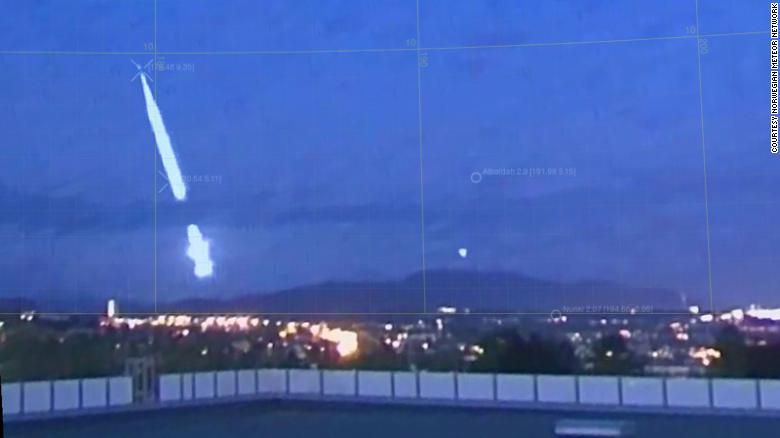Meteor shakes buildings in Vermont 1:02
(CNN) -
An "unusually large" meteor lit up the night sky over southern Scandinavia early Sunday morning before at least part of it rumbled down near Oslo, Norway's capital.
The meteor "lit up the sky for a brief time as if it were broad daylight," just after 1 am, Steinar Midtskogen, a spokesman for the Norwegian Meteor Network, told CNN.
A large meteor appears as a fireball shortly after 1 a.m. over Oslo, Norway, on Sunday, July 25.
"A minute or more later, a loud rumbling sound could be heard over a large area, perhaps up to 100 km away from where the meteor was seen directly overhead," Midtskogen said in an email.
Some people close to the meteor's path reported feeling a shock wave, Midtskogen said.
"The doors and windows were opened and there were gusts of wind. However, no damage has been reported," Midtskogen said.
Meteorites over Norway are not uncommon, and the network has several cameras that continuously monitor the sky, according to Midtskogen.
advertising
A preliminary analysis of the camera videos shows that the meteor struck Lier, about 15 miles west of Oslo, he said.
The Norwegian Seismic Array (NORSAR) confirmed the affected area and "recorded the air strike that hit the ground as a seismic event," according to Midtskogen.
Now the search for meteorites (parts of the meteor) on the ground has started.
The meteor likely fell about 15 miles outside of Oslo, experts said.
"We still don't know the size of the meteor for sure. It could be a rock weighing a few hundred kilograms, but we think that only a small part of this body would have reached the ground," Midtskogen said.
"Our preliminary analysis suggests that it entered Earth's atmosphere at a speed of about 15 km / s and fragmented into a series of bright flashes between 35 and 25 km above the ground."
wrote.
The analysis also suggests that the meteor was not typical in the sense that "its orbit appears to have been confined to the innermost part of the solar system" and did not originate in the asteroid belt between Mars and Jupiter, he said.
"This would make meteorite recovery very valuable to science," Midtskogen said.
meteor



